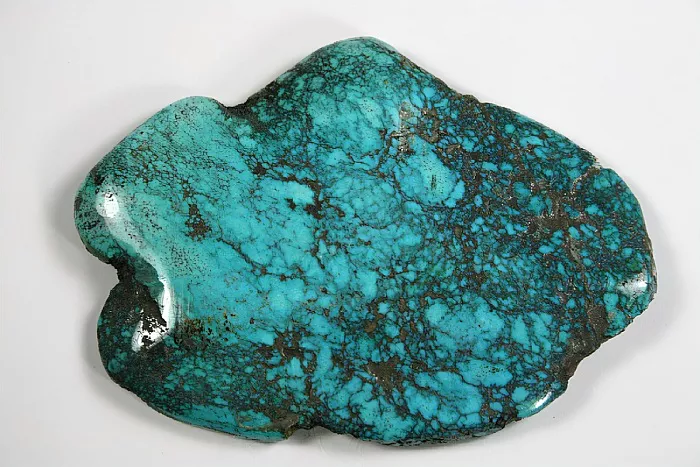Turquoise is a stunning gemstone known for its vibrant blue and green hues. But when choosing turquoise, many people wonder: Is light or dark turquoise better? The answer depends on personal preference, cultural significance, durability, and fashion trends.
In this article, we will explore the differences between light and dark turquoise. We will discuss their origins, meanings, durability, and how to choose the best shade for your needs.
What Determines Turquoise Color?
Turquoise gets its color from trace elements in its chemical composition. The two main factors affecting its shade are:
- Copper Content – More copper gives turquoise a bright blue color.
- Iron Content – More iron shifts the color toward green.
Other factors include:
Porosity (how much water the stone absorbs)
Matrix (the veins or patterns within the stone)
Mining Location (different regions produce different shades)
Now, let’s compare light and dark turquoise in detail.
Light Turquoise: Bright and Sky-Like
Light turquoise is often a soft, sky-blue shade. Some stones may have a slight green tint.
Characteristics of Light Turquoise
Color Range:
Pale blue, robin’s egg blue, or faint greenish-blue.
Appearance:
Clean, bright, and often with minimal matrix (veins).
Popular Sources:
Iran (Persian turquoise), Arizona (Sleeping Beauty turquoise).
Pros of Light Turquoise
- Elegant & Timeless – Light turquoise has a delicate, classic look.
- Matches Many Skin Tones – Works well with fair and medium skin tones.
- Versatile in Jewelry – Pairs beautifully with silver and white gold.
- Highly Valued in Some Cultures – Persian turquoise is prized for its pure blue color.
Cons of Light Turquoise
May Show Wear More Easily – Lighter stones can look faded if not cared for properly.
Less Earthy Feel – Some prefer the deeper, richer tones of dark turquoise.
Best Uses for Light Turquoise
Delicate jewelry (thin rings, earrings, pendants).
Summer and spring fashion.
Minimalist and bohemian styles.
Dark Turquoise: Deep and Earthy
Dark turquoise has a richer, more intense color. It often leans toward greenish-blue or teal.
Characteristics of Dark Turquoise
Color Range:
Deep blue-green, forest green, or teal.
Appearance:
Often has visible matrix (spiderweb or patchy patterns).
Popular Sources:
Nevada (Nevada turquoise), China, and New Mexico.
Pros of Dark Turquoise
- Bold & Eye-Catching – Makes a strong statement in jewelry.
- More Durable-Looking – Darker colors hide scratches better.
- Natural & Earthy Feel – Preferred in Native American and Southwestern styles.
- Unique Patterns – Often has beautiful matrix designs.
Cons of Dark Turquoise
Can Look Too Green – Some people prefer pure blue tones.
May Not Suit All Skin Tones – Darker turquoise can clash with very fair skin.
Best Uses for Dark Turquoise
Statement jewelry (chunky rings, bold bracelets).
Fall and winter fashion.
Southwestern and tribal-inspired designs.
Which Is More Valuable: Light or Dark Turquoise?
Value depends on several factors:
- Color Preference – Persian blue (light) is highly sought after, but some collectors love deep green-blue stones.
- Rarity – Some mines produce only light or dark turquoise, affecting price.
- Treatments – Natural, untreated turquoise is more valuable than stabilized or dyed stones.
Generally:
Light blue turquoise (Persian/Sleeping Beauty) is often more expensive.
Dark turquoise with unique matrix can also be valuable.
Durability: Does Color Affect Strength?
Turquoise is a relatively soft stone (5-6 on the Mohs scale). However, color can influence how it wears:
Light turquoise may show scratches and discoloration more easily.
Dark turquoise hides wear better due to its deeper color.
Tip: Both shades need protection from chemicals, heat, and harsh impacts.
Cultural & Spiritual Meanings
Different cultures prefer different shades:
Persian & Middle Eastern Traditions – Light blue turquoise symbolizes purity and protection.
Native American Beliefs – Darker turquoise represents earth, healing, and connection to nature.
Modern Spiritual Views – Light turquoise is calming; dark turquoise is grounding.
How to Choose Between Light and Dark Turquoise
Ask yourself:
Do I prefer soft or bold colors?
Light = subtle elegance.
Dark = strong, natural look.
What jewelry style do I like?
Light = delicate, classic.
Dark = rustic, statement pieces.
Does it match my skin tone?
Fair skin → Light turquoise often works better.
Warm/olive skin → Dark turquoise can enhance your look.
What’s my budget?
High-end light blue turquoise can be pricier.
Dark turquoise with matrix is often more affordable.
Final Verdict: Which Is Better?
There’s no “better” shade—it depends on your taste and needs.
Choose Light Turquoise If:
You love a soft, elegant look.
You want a classic, versatile stone.
You prefer Persian or high-quality blue turquoise.
Choose Dark Turquoise If:
You love bold, earthy jewelry.
You want a stone that hides wear well.
You appreciate Native American or Southwestern styles.
Conclusion
Both light and dark turquoise have unique beauty. Light turquoise is timeless and refined, while dark turquoise is rich and natural. The best choice depends on your style, skin tone, and how you plan to wear it.
No matter which you pick, turquoise is a stunning gemstone with deep cultural meaning. Whether you prefer the sky-like glow of light turquoise or the deep earthiness of dark turquoise, both shades will make a beautiful addition to your jewelry collection.
Would you choose light or dark turquoise? Let us know in the comments!
Related topics:
How Can I Tell if My Turquoise Is Real
How Do I Choose a Turquoise Stone


